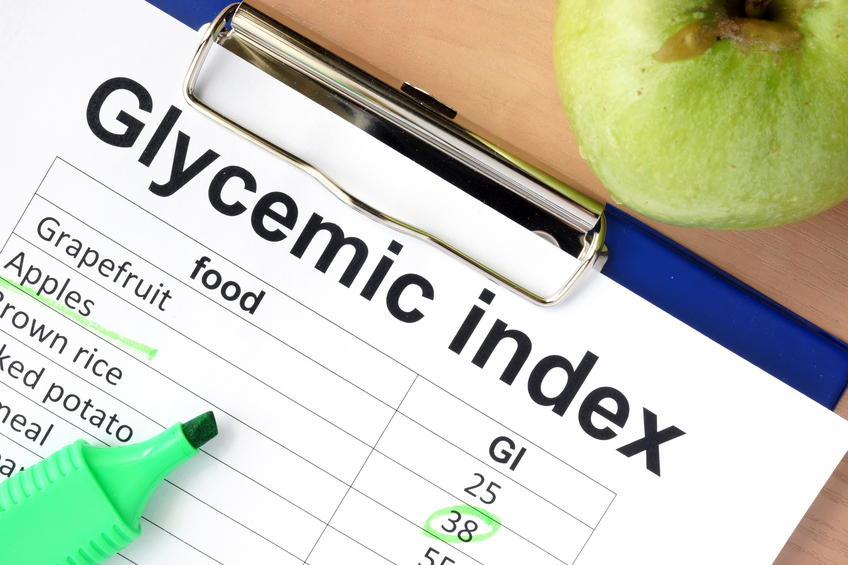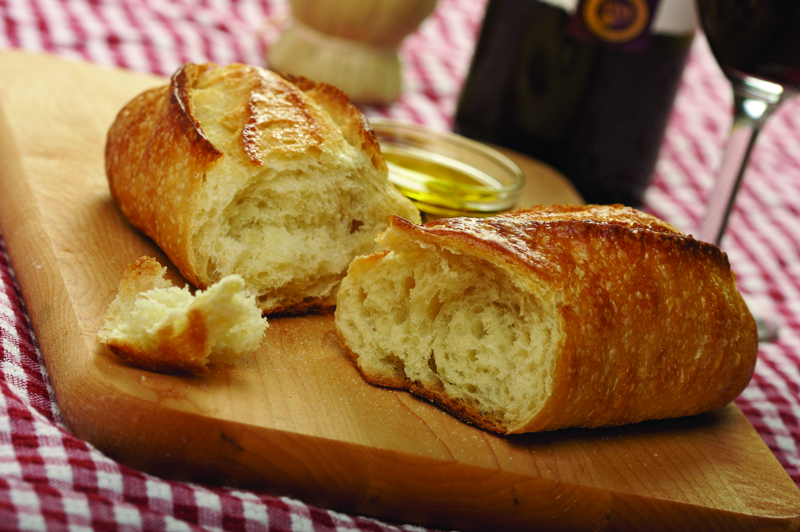More and more people are becoming aware of the importance of maintaining stable blood sugar levels, but as Dr Eva Detko explains, there is still much confusion around the concept of glycaemic index and glycaemic load…

So why is keeping our blood sugar levels in check so important?
When we eat, digestible carbohydrates in our food get converted into blood sugar (glucose). Blood sugar is the body’s preferential source of energy. Our blood sugar levels affect how hungry and how energetic we feel, while they also determine whether we burn fat or store it. The hormone responsible for transporting excess blood sugar after a meal into our cells is insulin (produced by the pancreas). Conversely, glucagon (also a pancreatic hormone) activates the release of glucose into the bloodstream when our blood sugar level is low. When our diet is balanced, these two hormones work well together, successfully maintaining our blood sugar levels within a fairly narrow range.
However, when we regularly consume sugary or refi ned carbohydrate-rich foods, this delicate hormonal balance becomes disrupted. This is because sugary and refi ned carbohydrate foods are processed and released into the bloodstream quickly. This tends to cause a large increase in blood sugar, which in turn stimulates the pancreas to release a substantial amount of insulin. The release of insulin assists with the removal of excess glucose from the bloodstream. This is an important mechanism, as chronic high blood glucose levels are dangerous and lead to organ damage. Unfortunately, at the same time, insulin signals that plenty of energy is readily available in the form of glucose and that the body should stop burning fat and start storing it. As mentioned earlier, glucose is the body’s preferential fuel, which means that when glucose is available, the body prefers using it over fat. Additionally, these exaggerated insulin surges can cause too much blood sugar to be transported from the bloodstream into the body’s cells. This can result in blood sugar dropping below normal levels, leading to hypoglycaemia (low blood sugar).
When this happens, we feel sluggish, irritable and hungry. This is an undesirable state for the body to be in because the brain relies on glucose as its only source of fuel, so the body responds to protect us. As a result, at this point we tend to crave foods high in sugar. Acting on those cravings causes another spike in our blood sugar, quickly followed by another slump in energy levels. This can easily turn into a vicious cycle of temporary ‘highs’, followed by lethargy, sugar cravings, and of course resulting fat storage. Upsetting our body’s chemical balance in this way leads to infl ammation, depressed immune function and over time it may result in degenerative diseases such as diabetes, heart disease and even cancer. Therefore, to promote good health and maintain desirable weight, we need to keep our blood sugar and insulin levels stable. In order to achieve this, we need to be aware of the carbohydrate content of our food, as well as the concept of glycaemic index and glycaemic load.
So what is glycaemic index?
The glycaemic index (GI) provides a measure of how quickly blood sugar levels increase after eating a particular type of food. This is important because the effects of different foods on blood sugar levels (glycaemic response) are highly variable. The GI is a ranking of carbohydrate foods on a scale from 0-100, according to the extent to which they raise blood sugar levels after eating. This is usually established using pure glucose as a reference, the GI of which has been set at 100. GI values of 55 or less are considered ‘low’, between 56 and 69 are considered ‘moderate’, and above 70 are considered ‘high’. GI values are determined experimentally by feeding human participants a fi xed portion of a given food (after an overnight fast), then subsequently measuring their blood glucose response at specifi c intervals. The theory behind the GI is to minimise insulin-related health problems by identifying and avoiding foods that have the greatest impact on blood sugar levels. Before this concept was developed, simple sugars (e.g. table sugar, sweets) had been believed to be digested quickly and cause a rapid increase in blood sugar. On the other hand, ‘complex carbohydrates’ (e.g. bread) had been thought to be processed and released into the bloodstream more slowly. We now know that this is not always the case. While many sweet and sugary foods do have high GI values, some starchy foods (e.g. white bread) have higher GI values than honey or table sugar.
Why is glycaemic load more relevant than glycaemic index?
One limitation of the GI is that it does not take into account the amount of carbohydrate actually consumed. This is a problem because the body’s glycaemic response is dependent on both the type and the amount of carbohydrate consumed. This means that you could have a small amount of food with a high GI value (e.g. a couple of jelly beans) and your glycaemic response will be relatively small. Conversely, you could have a large amount of food that has a much lower GI value (e.g. potato chips) and produce a much higher glycaemic response. To allow for that, the concept of glycaemic load (GL) was developed. GL is calculated in the following way:
GL = GI / 100 x net carbohydrate content (net carbohydrate content is equal to the total carbohydrate content minus dietary fibre)
GL estimates the impact of carbohydrate consumption using GI values while taking into account the amount of carbohydrate consumed. Generally, GL values below 10 are considered ‘low’, between 10 and 19 are considered ‘moderate’, and above 20 are considered ‘high’. For weight loss and general health, it’s recommended to choose low to medium-GI and GL foods in order to keep blood sugar and insulin stable. Most experts recommend that the total GL should be 100 or less per day. People with diabetes or metabolic syndrome may want to aim even lower than this. A number of studies have shown that people on high-GI (high-GL) diets are much more likely to develop Type 2 diabetes, agerelated macular degeneration, cardiovascular and kidney disease, compared to those on low-GI (low-GL) diets.
It is important to remember that glycaemic response varies between individuals and can even vary in the same person from day to day, or from one time of day to another. In addition to that, people can have different insulin responses (i.e. produce different levels of insulin), even with an identical glycaemic response. Moreover, most of the available GI values show the effect of a particular food on glucose levels in the first two hours following ingestion. Some people with diabetes may have elevated blood sugar levels for longer than that.
When using the GI and GL, there are also additional limitations to be aware of. Most of the time GI charts only give one value per food, yet variations are likely to occur depending on variety, ripeness, cooking methods, processing and the length of storage. Therefore, you should avoid overcooking pasta, rice, etc. The longer the cooking time, the higher the GI. Moreover, fat, protein and fibre lower the GI of food. For example, despite being high in sugar, chocolate has a medium GI value due to its high fat content. Similarly, crisps will have a lower GI value than potatoes cooked without fat, e.g. baked potato. This is a reminder that the GI and GL only inform us about the carbohydrate content of foods.
In summary
With all its limitations, the concept of GI and GL is far from an exact science. Nonetheless, it is still one of the best tools available for providing information about the impact of carbohydrates on blood sugar levels, making it extremely useful in conjunction with other healthy eating plans.
Wheat, Gluten & Dairy- Free Recipes by Dr Eva Detko is available from www.dr-eva.com/new-cook-book.
Photography by Peter Eccott. (RRP £11.95). Like her on Facebook and follow her Twitter.
Have a look at these gluten-free, sugar-free and dairy-free recipes. Or click here for more information about living sugar-free or gluten-free.


